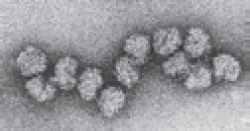
Ribosomes are factories for protein synthesis
The *ribosomes of prokaryotes and eukaryotes are similar in that both types consist of two different-*connect the concepts As discussed in Key Concept 14.5, the ribosome is the molecular workbench where mRNA is translated into protein.
In prokaryotic cells, ribosomes generally float freely in the cytoplasm. In eukaryotic cells they are found in multiple places: floating freely in the cytoplasm or attached to the surface of the endoplasmic reticulum (a membrane-
Because they lack membranes and are not a compartment, ribosomes are not classified as organelles. Rather, like the cytoskeleton they are called cell structures.